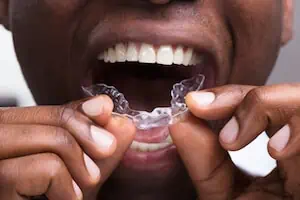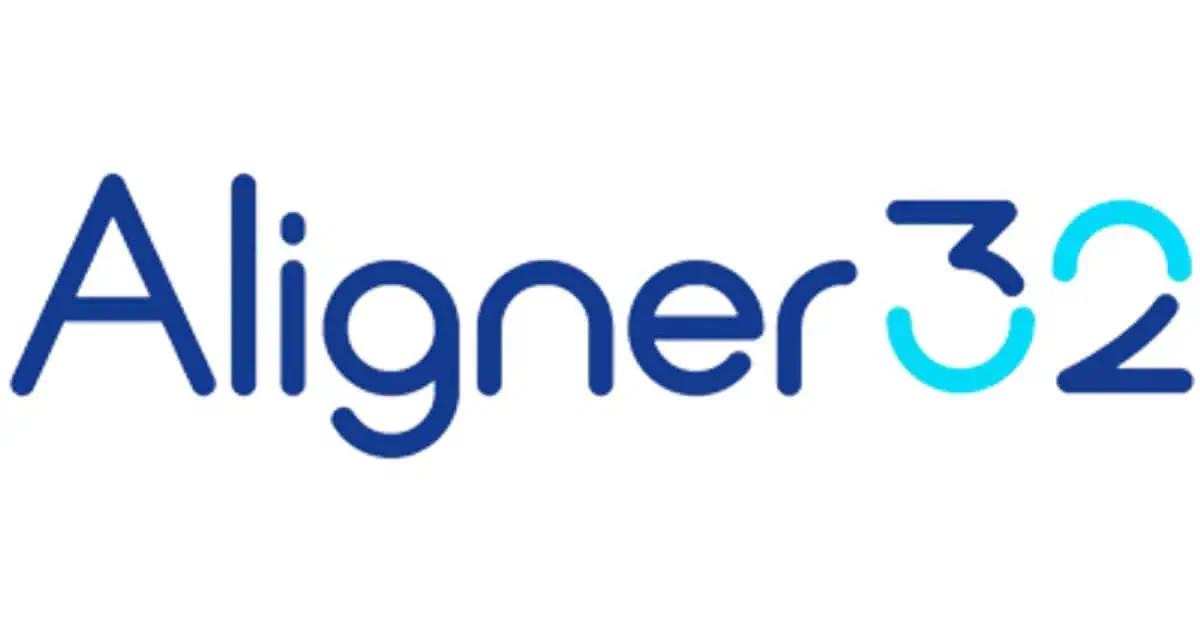If you’re considering orthodontic treatment and wondering about the monthly cost of braces, this guide will provide you with the information you need. We’ll explore the average cost of braces per month, the types of braces available, and ways to make them more affordable. Keep reading to discover the best options for your lifestyle and budget.
Your braces treatment may cost between $1,200 and $13,000 total, and anywhere from as little as $80 per month to $650 per month, depending on where you live, how long the treatment is, and which type of braces you get.
There are many different types, some more affordable than others. Insurance plans can also impact the amount you spend, so keep reading to get a better idea of the cost for your treatment.
Average cost of braces per month
Braces treatment typically ranges from $1,200 to $13,000 in total. Monthly costs can vary between $80 and $650, depending on factors such as location, treatment duration, and the type of braces chosen.
The cost of both traditional and Invisalign treatment includes in-office visits and regularly scheduled monitoring by a dentist or orthodontist.
The cost of traditional braces typically includes any adjunct appliances therapy that may be used at various stages of treatment (e.g., headgear, expanders, etc.) as well as any necessary radiographs (panoramic and cephalometric) to ensure complete accuracy of tooth movement and jaw alignment.
Traditional metal braces
These braces use wires and brackets to align teeth gradually. They are meant to treat moderate to severe alignment issues, with a total price ranging from $2,500 to $7,500. The average monthly cost is approximately $200 to $250. It can take anywhere from several months to a few years to complete this treatment plan.
This option is usually the most cost-effective if you have moderate to severe alignment issues. However, these braces are also the most visible option, causing some adults and teens to look for less noticeable solutions.
Invisible braces (Invisalign)
Invisalign clear aligners are a discreet alternative to traditional metal brackets, allowing you to straighten teeth without braces. They have no wires or brackets and are removable. The cost of Invisalign ranges from $3,500 to $8,500, with an average monthly cost of $330 to $500.
When compared to other clear aligner treatment options, Invisalign treatment indications include a broader range of maligned and malpositioned teeth.
Other affordable clear aligner options are available, starting from just $79/month for mild to moderate cases.
- Most affordable options
- Single and dual arch, day and night options
- Convenient AlignerTracker app
- Free teeth whitening
Aligner32 offers a convenient and affordable way for individuals to straighten their teeth using custom-fit clear aligners. Their service is designed for at-home use, allowing customers to avoid frequent orthodontist visits while still achieving professional-grade results.
Aligner32 provides two main treatment plans tailored to suit different needs:
- All-Day Plan: The All-Day Plan requires 22 hours of daily wear and offers faster results, with treatment lasting between 4 to 6 months.
- Night Wear Plan: The Night Wear Plan is ideal for those who prefer a more flexible routine, requiring just 10 hours of daily wear, typically at night, with a treatment duration of 6 to 8 months.
Both plans are designed to treat a range of orthodontic issues, including crowding, spacing, overbites, underbites, and crossbites.
With affordability in mind, Aligner32’s clear aligners are significantly less expensive than traditional braces, which can cost between $5,000 to $8,000. Customers can also use flexible payment plans, making it easier to manage the cost.
Additionally, Aligner32 offers a free teeth whitening kit with their aligner packages, making the treatment even more appealing. The company emphasizes comfort, convenience, and professional care, making it a popular choice for those seeking a better smile without the high costs and hassle of conventional orthodontic treatments.
- Complete treatment 100% remotely
- Amazing customer service
- Nighttime-only option
- $1,495 or $55/month
NewSmile aligners are made from the clearest Essix plastic and come with a daytime or nighttime-only option to suit you. For just $1,495 you’ll receive everything you need to straighten and whiten your teeth – and maintain your new smile:
- Home impression kit
- Full aligner treatment
- Free whitening
- First set of retainers
- A full refund if you’re not a good fit
NewSmile goes above and beyond to provide a great experience to all their customers, beginning with a live video call to help you with your teeth impressions. Mail these back, and they’ll send a 3D Treatment Preview for you to approve before going ahead.
- Smileie Pro offers hybrid treatment!
- Single-arch treatment option
- Nighttime aligners available
- Free refinements & 2 sets of retainers
- $699 (single-arch) or $999 (dual-arch)
Smileie’s aligner treatment is not only affordable, but flexible too. You have the option of Smileie Pro, which is hybrid treatment that involves in-office visits with a dentist.
That means more accurate, safer and effective treatment or a wider variety of cases.
But you can also opt for single-arch treatment for just your top or bottom teeth, as well as nighttime-only treatment. And whichever package you choose, monthly payments are available.
On top of this, Smileie offers a 100% satisfaction guarantee which includes free refinements if needed. Their aligners are made in the US and treatment takes 4-6 months on average.
Get Smileie Pro for just $1499, or —
Get the best discount on the standard plan, with 100% remote treatment, when you purchase your aligner package up-front, including:
- Home impression kit
- Teeth whitening kit
- Two sets of retainers
- A full refund if you’re not a good candidate
Packages start at $699 for single-arch treatment. Click below to check for current discounts!
- Complete treatment 100% remotely
- 4-6 month average treatment time
- Nighttime-only option
- $770 or $64/month
If you’re looking for the best value aligner package, here it is! For just $895 you’ll get:
- Impression kit
- Full aligner treatment course
- Free teeth whitening kit
- Your first set of retainers
In short, everything needed to straighten your teeth remotely and keep them looking great, with a full money-back guarantee if you’re not a suitable candidate.
This low price doesn’t mean you’re compromising on quality of care, though. ALIGNERCO just choose not to put so much into marketing, and they pass on the savings to their customers. They are also known for their responsive and helpful customer care, which is important when you’re doing things from home.
Nighttime-only aligners are also available for anyone who doesn’t want to wear aligners during the day.
Of the clear aligners mentioned above, one of the most flexible options in terms of cost is Smileie aligners.
You may not have heard of them yet because they are pretty new to the market, but they give patients the option to only do treatment with a single aligner for the top or bottom row of teeth if they want (you can of course correct alignment for both your top and bottom rows of teeth as well).
If you do only need treatment for a single arch, you can cut your costs in half; plus when you combine that with a payment plan, you can pay for your aligners in 6 installments of $100 with a small down payment upfront.
Find out more in our full article about Smileie aligners.
Other types of braces
Invisalign and metal braces tend to be the most common orthodontic treatments. However, there are other options.


- Lingual braces: These discreet braces are placed behind the teeth and cost up to $13,000, with a monthly range of $450 to $650.
- Ceramic braces: Similar to metal braces but tooth-colored, ceramic braces cost up to $10,000, with a monthly range of $270 to $350.
- At-home clear aligners: Remote clear aligners offer the lowest average cost, ranging from $80 to $300 per month.
Paying for braces: How much do braces cost per month without insurance?
The average cost of braces per month without insurance is from $2,500 to $7,500 for traditional metal braces. However, these costs can vary greatly and will depend on the type of treatment you select. It also depends on the length of your treatment time. You should talk with your orthodontist about the cost — most offer a free consultation.
Your orthodontic practice likely offers monthly payment plans to those without insurance. If you can request to have your payment period extended, you could pay less each month, over a longer period of time.
Braces monthly payment
Many orthodontic practices offer monthly payment plans and financing options. Third-party financing companies often partner with dental offices to provide flexible payment arrangements with minimal or no interest. Payment periods can extend up to 24 months, reducing the monthly cost burden.
Of course, every office is going to run differently. We recommend that you get a free consultation with your dentist or orthodontist and ask them the following questions:
- What are your payment plan policies?
- Is my child covered by insurance?
- Is there interest on the plan?
- What is the length of time I have to cover the treatments?
- Can I make adjustments to the plan?
- Are there any fees?
- What can I do to save more money?
Saving money on braces


- Dental insurance: Discuss coverage options with your orthodontist and inquire about your child’s insurance eligibility with Medicaid.
- Flexible spending accounts: Utilize HSA, FSA, HRA, or similar accounts to help lower treatment costs. We mentioned NewSmile aligners above — they let you use the money you set aside in an HSA or FSA to pay for your clear aligner treatment.
- Consultation: Take advantage of free consultations to discuss payment plan policies, interest rates, treatment duration, adjustments, fees, and potential savings.
Conclusion
Braces treatment can be pricey, but there are many different ways to manage it. The braces cost will depend on where you live, what type of braces you get, and the complexity of the removal process. All of these factors add to the total braces cost.
Be sure to discuss your payment options at your consultation with your orthodontist if you plan on paying for the braces without insurance. Typically, orthodontists will allow you to pay in monthly installments with no interest.
No matter what you decide to do, your oral health is important! Although high costs make it difficult to pay for braces, remember that ultimately it’s an investment in your oral health and even your mental health, according to some studies.
NIH: The effect of orthodontic intervention on mental health and body image. Consulted 12th June 2023.







